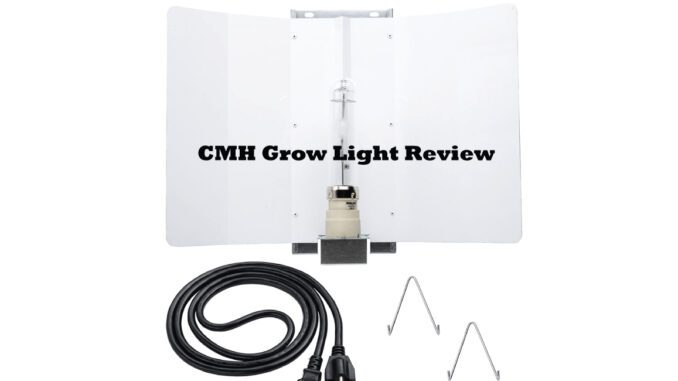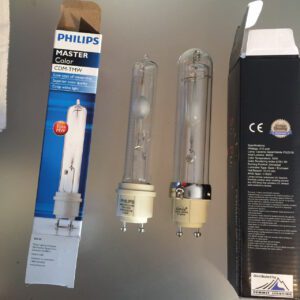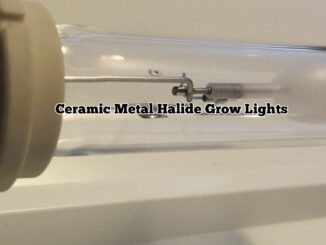
CMH Grow Light Review
Summit Lighting’s 315 watt Ceramic Metal Halide, Real World Testing
In our CMH grow light review we examine a popular Ceramic Metal Halide crop lighting system after around one year of real world testing by several of Grozine’s reliable and faithful indoor test growers.
For an overview of the Ceramic Metal Halide technology or sometimes Light Emitting Ceramic (LEC) as it’s referred to, please have a look at our article HERE.
[quote]To us here, that’s pretty impressive, i.e. better quality and comparable yields using about HALF the power for indoor grow lighting.[/quote]
Overall the results for our CMH grow light review are favorable; the technology delivers great results when applied correctly in a variety of growing applications from vegetative growth through to the bloom phase and ripening.
Please note that our CMH grow light review is specific to the lumiere (lighting fixture assembly) and lamp type we tested, which is a 315watt CMH lumiere by Summit Lighting equipped with a Philips CDM Elite MW 315/T9/930/U/E lamp type. Results may vary if using a different ballast, lamp type and reflector assembly.
So let’s run down the list of claims and compare what our test pilots had to say after several crops using the technology.
A 315 watt CMH system can compete with a 1000W standard HPS for yields and crop quality.
Close, but not quite in the yield department. As far as quality goes, most plant types and strains were of better quality when grown solely with the CMH system or when the CMH system was combined with HPS lighting versus HPS (high pressure sodium) only.
The consensus from our camp at Grozine was that that we could all agree that yield levels would be near near 700 watts worth of conventional HPS lighting. To us here, that’s pretty impressive, i.e. better quality and comparable yields using about HALF the power for indoor grow lighting.
While quality is subjective, plants produced healthier growth, firmer fruits, more pungent herbs and yielded stronger aromas when the 315 watt CMH fixtures were used solely or as part of an an indoor crop lighting system.
Single Jacket CMH lamps (T9 type vs T12 type, double jacket) are less reliable or safe in grow rooms.
In more than one grow room and as applied and operated by several different growers (which included transporting the lamps and lumieres) there was not a single remark or incidence where lamps would not start, failed or ruptured. This doesn’t mean that when using single jacketed CMH lamps that you shouldn’t follow the Manufacturers’ protocol, i.e., no human occupancy when single jacketed lamps are in operation (note, work can be performed during dark cycle under green LEDs)
The higher UV Light wavelengths appear to promote better quality in a variety of crops.
Absolutely, yes, is the consensus based on our collective qualitative observations. On several different plant types and strains plants that received light directly from the CMH fixtures made noticeable differences in what are common markers or measures as “quality” in a given crop type, i.e. more essential oils in herbs, firmer flowers or fruits, increased aromas and flavours, etc.
Other attributes noted by Grozine’s test pilots:
- light weight fixtures; easy to raise and lower for adjustment of lighting intensity or coverage
- very cool operation; both fixture and lamp
- coverage as sole lighting source is around three and a half feet buy three and a half feet with adequate space from lamp to plant canopy versus four feet by four feet or five feet by five feet, as often recommended
- best results in high light plants were achieved when lamps were around sixteen inches from the plant canopy versus the thirty six inches or greater often recommended; note there is a sacrifice in coverage for increased intensity naturally, i.e. narrower beam from lamp when moved closer.
Would we use CMH as a sole lighting source?
Based on multiple tests for our CMH Grow Light Review, we’d say it’s very doable—especially for tent growers where keeping temperatures down is a challenge with HPS fixtures.
For commercial applications we’d say in mothers, vegetative and as a ripening lamps absolutely as a sole lighting source. If budget allows closer lumiere spacing and crops are of lower profile, we can also recommend the 315 CMH light kits as a sole source for bloom in high light plants.
As a supplemental source of light to HPS, or even natural lighting we whole heartedly recommend this 315 watt grow light system; we have yet to conduct trials in greenhouse conditions; stand by for more here later.
TIPS from The Pros On Getting the MOST from 315 watt CMH Lighting Systems:
“lower the feeding and water pH at 6.5. daytime temps at 76 f and over night temps at 79 f. CO2 at 450 ppm, keep the foot candles down to 4000, to 5,000 in flower and back down to 4, 000 in flush”


